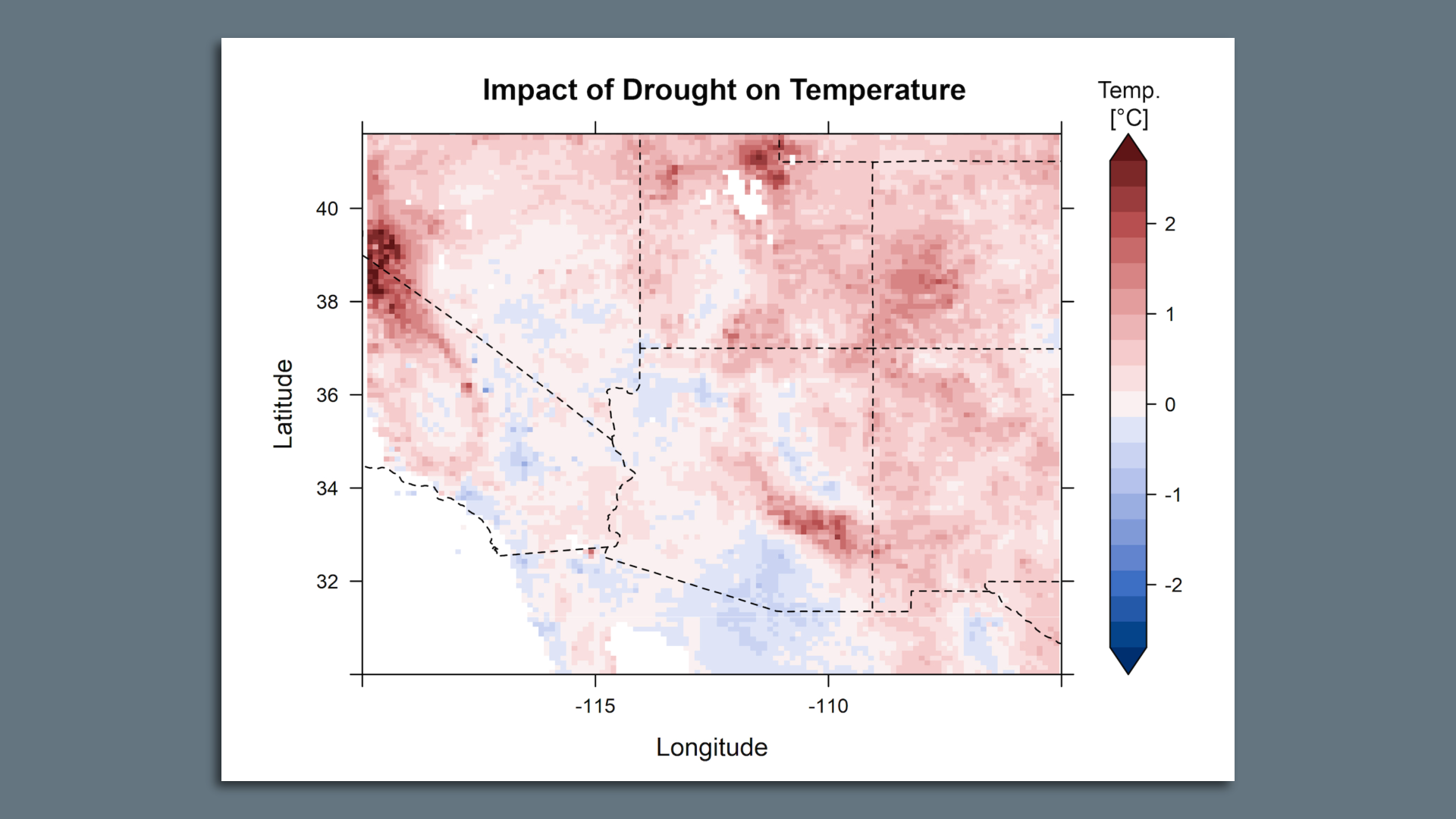Two new studies shed light on the increasing risks the world faces from global warming and how such dangers can escalate in a cascading fashion.
Why it matters: One study published this week in the journal Geophysical Research Letters warns that certain extremes, such as drought, can exacerbate other climate hazards like heat waves.
Driving the news: When climate change-related extremes interact, they can create cascading and unprecedented outcomes, per the new research.
- The Southwest is currently enduring a prolonged, human-induced megadrought, and these conditions are raising the odds for a hotter, drier summer with high wildfire risks.
The big picture: The study shows that extreme drought in the Southwest during June of 2021 led to record heat throughout the region, and exacerbated the dry conditions.
- Its authors say similar interactions between drought and heat likely enabled wildfires in New Mexico to grow to record sizes in the past few months.
- "The outcome is more than the sum of its parts," study co-author Benjamin Zaitchik, a Johns Hopkins University researcher, said via an email exchange.
- "We're seeing a climate change signal of earlier springs, faster drying, and early summer warmth feed back on itself, leading to larger impacts than we would predict taking each hazard on its own."
Context: The threat of compound, unprecedented events, is one reason scientists have been studying differences in risks associated with different levels of global warming.
- The world is already about 1.2°C (2.2°F) warmer than preindustrial levels, and is on course for around 3°C (5.4°F) of warming through 2100, barring more stringent emissions cuts.
The second study, published today in the journal Climatic Change, uses projections from 21 computer models.
- The researchers determined how much society's climate risk exposure, from effects such as water scarcity to heat stress, would differ by holding warming to 1.5°C, compared to more severe levels.
What they found: The study found that by limiting global warming to the most stringent Paris target, societal risks could be reduced by 85% compared to those associated with about 3.6°C (6.48°F) of warming.
- Risks to people would be slashed by 10% to 44% globally if warming is limited to 1.5°C when compared to 2°C, it found.

What they're saying: Rachel Warren, the study's lead author and a researcher at the Tyndall Centre for Climate Change Research, said via an email exchange that it is not too late to prevent the most dangerous climate change outcomes.
- "It is not the time to despair, it’s the time to participate in an exciting decade of transformation," Warren said.
The study on ties between the Southwestern megadrought and extreme heat found that unusually dry conditions boosted regional temperatures in June 2021 by up to 4°F. The greatest difference occurred in forested landscapes, rather than the open desert.
Zoom in: Compound events, in which one extreme feeds into another, are recipes for record-shattering outcomes.
State of play: According to co-author Benjamin Zaitchik of Johns Hopkins University, the drought-heat nexus was on display again this spring when New Mexico's largest fire on record forced thousands to evacuate.
- "Cascading dry-hot extremes could be particularly pronounced in ecologically sensitive and fire-prone forests," Zaitchik said via email.







